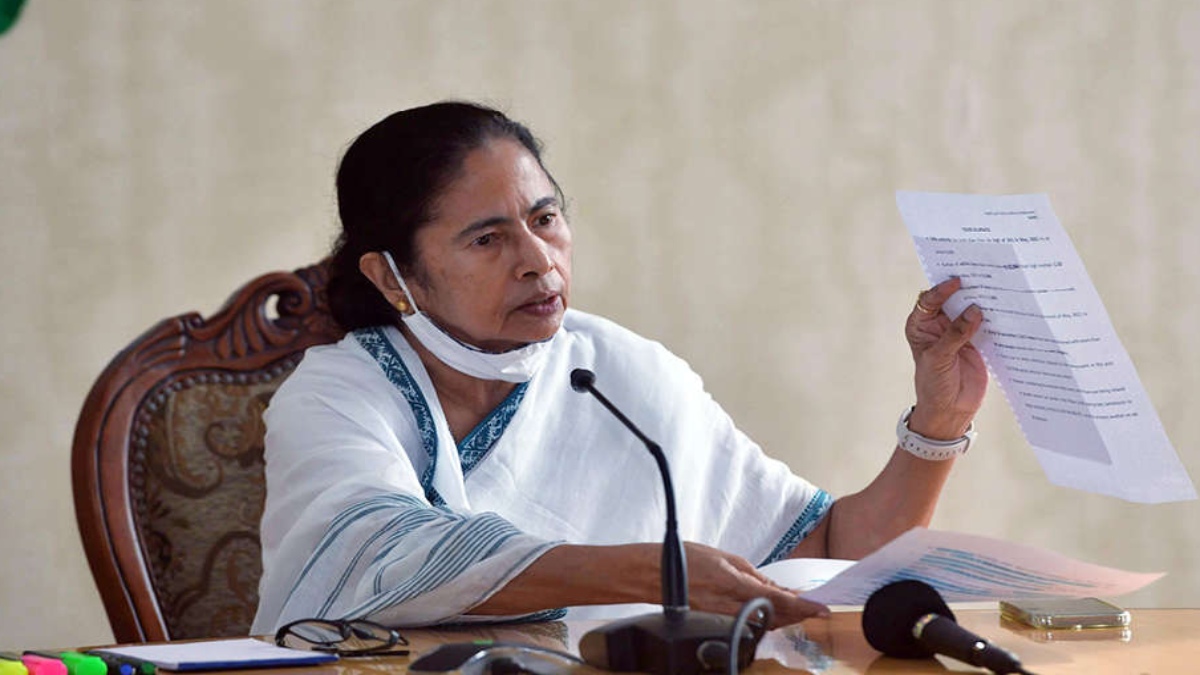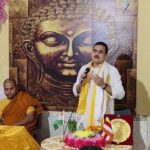‘Khela Hobe’ of retributive violence
- By : Anirban Ganguly
- Category : Articles

Mamata Banerjee’s slogan of ‘Khela Hobe’ has been manifested violently in West Bengal in the last two months; this is a model she hopes to replicate across India. It is a retribution-driven dream that ought to be resoundingly rejected.
While she chases her pipe dream of heading a ‘Federal Front’ as Prime Minister in 2024, Mamata Banerjee’s newly elected government in West Bengal is beginning to slip on a number of fronts. That she lost in the just concluded Assembly elections in the state and is thus both a ‘non-MLA’ Chief Minister who has also faced defeat, is just one part of the story. The fact that she has lost has jolted and rankled her so badly that she is unwilling to engage with the BJP or the Leader of Opposition Suvendu Adhikari on the floor of the House. A sore loser who has taken defeat personally, Banerjee has displayed her limited or non-existing capacity to face democratic opposition.
To those who have been following Mamata Banerjee’s political trajectory, her political conduct both in the state and in Parliament—in the past—her intolerance to democratic opposition is nothing new. That the BJP could garner the support of a sizeable portion of the electorate and emerge as the single largest Opposition in the West Bengal Assembly has irritated the Trinamool Congress leader and she has, in the last two months, repeatedly displayed a stubborn unwillingness to adhere to legislative norms and engage with the party in the Assembly.
While the state is reeling under a cycle of premeditated post-poll violence unleashed on BJP workers and supporters by her party, while people across the state continue to suffer because of a mismanaged vaccination drive by her government, while higher-secondary students across the state protest against the announced results, while a series of internecine clashes among TMC workers are being reported from across the state, while the National Human Rights Commission’s report on the post-poll violence has severely indicted her government on its atrocious track record of human rights and enforcing rule of law, Mamata Banerjee has suddenly air dashed to Delhi in order to launch herself on the national scene by quite openly declaring her national ambitions of becoming Prime Minister of India.
But that is a proposition which is easier said than done since no one really knows what the West Bengal model is except that the TMC model of ruling West Bengal is propped up on political coercion, intimidation, issuing of doles and patronage and ensuring that a select few belonging to the ruling party or affiliated to it thrive. Surely, this is not a model that anyone, except the extreme purblind, would want to be replicated across the country. So precarious is the law-and-order situation under Mamata Banerjee’s watch that the Members of the NHRC in course of their visit to the affected areas were attacked and nearly assaulted by the ruling party’s supporters.
The NHRC’s recent report submitted to the Calcutta High Court has been a severe indictment of the Mamata Banerjee government’s human rights record. No other state government, perhaps, since Independence, has been so severely called out for its disastrous record of protecting human rights. The NHRC report has starkly brought out the situation in West Bengal and speaks of retributive violence against political opponents especially against workers and supporters of the largest political party, in this case the BJP and speaks of the manifestation in West Bengal of the “Law of Ruler” instead of the prevalence of the “Rule of Law.”
It speaks of the apathy of the state government “towards the plight of victims” and describes the cycle of violence, as “retributive violence by supporters of the ruling party against supporters of the main Opposition party.” The TMC unleashed violence has deliberately aimed to economically maim and socially isolate supporters of the BJP and has economically and socially disrupted their lives and means of livelihood of “thousands of people” leading to their “economic strangulation.” Most of the violent incident saw murders, rape, molestation, assault, vandalism, looting, dispossession, arson, extortion, threat and intimidation. A number of TMC leaders at the local level were involved in planning and egging on their supporters to indulge in mayhem. A large number of shops and houses were destroyed and looted and the violence was, as the NHRC report noted, “neither sporadic nor random” and instead “targeted specific persons (those associated with the main Opposition party). The violence was in retaliation “to those who “dared” to vote or support the major Opposition party. An examination of those who were affected by this violence show that members of the Scheduled Tribes and Scheduled Caste communities were most affected by it, their heads were tonsured in public and many of them were coerced into issuing public apology for having supported the main Opposition party.
The Commission’s report describes how there was palpable fear among those who wanted to depose before it, since they were convinced that they would be victimised later on and many among them had been threatened already asking them not to meet the members of the Commission. Interestingly, those human rights activists who make a living out of selling anti-Modi human right narrative have been silent on this report; in fact, they have made a studied silence on the entire post-violence issue in West Bengal. It ought to shock one no end to know that families—women and children are being victimised for supporting the principal Opposition party in West Bengal by being put through a planned and deliberate social boycott which sees their essentials being cut off. The NHRC report notes that apart from vandalisation and loot, a large number of houses of workers of the main Opposition party across West Bengal, saw their water and electricity connections being severed, “resulting in disruption of life and livelihood”.
For those of us who saw it on the ground, not alone workers of the main Opposition party, even the ordinary voter, the ordinary citizens who had exercised their democratic right and voted and voted in favour of the BJP were victimised. How? Many ask who have not seen or been exposed to such debasing levels of politics: wards, panchayats, or localities in which the TMC lost have seen their water and electricity connections disrupted for having not voted for the TMC.
The NHRC team noted how “many victims were also asked to cough up large sums of money as a precondition to their return to their homes. Many have not yet returned. Several victims complained about their identity cards, like ration cards, Aadhaar cards, Swastha Sathi cards (health cards) being snatched and destroyed by goons of the ruling party”; this prevented them from the benefits of various schemes. Reports have also come in, and it has also been corroborated by the NHRC report, of discrimination against administering vaccines to supporters of the main Opposition party. The message was to fall in line or leave the state.
The report also indicted the state police for being apathetic, partial, inactive or at times to be colluding with the perpetrator of violence and failed to take confidence building measures. The poor and marginalised, especially, the report noted, have lost faith in the police. On the Mamata Banerjee administration, the state administration, the report minced no words when it noted that it had no empathy, did not condemn the violence, provided no relief and most of its officers and leaders were inactive. The most alarming aspect of the report was its flagging a “pernicious politico-bureaucratic-criminal nexus”, it spoke of how “criminals indulged in violence against political rivals while the bureaucratic edifice was complicit in various degrees”.
This is how Mamata Banerjee’s slogan of “Khela Hobe” manifested in West Bengal in the last two months, this is a model she hopes to replicate across India, this hope propels her to fly to Delhi after long years. It is a retribution driven dream that ought to be resoundingly rejected.
















